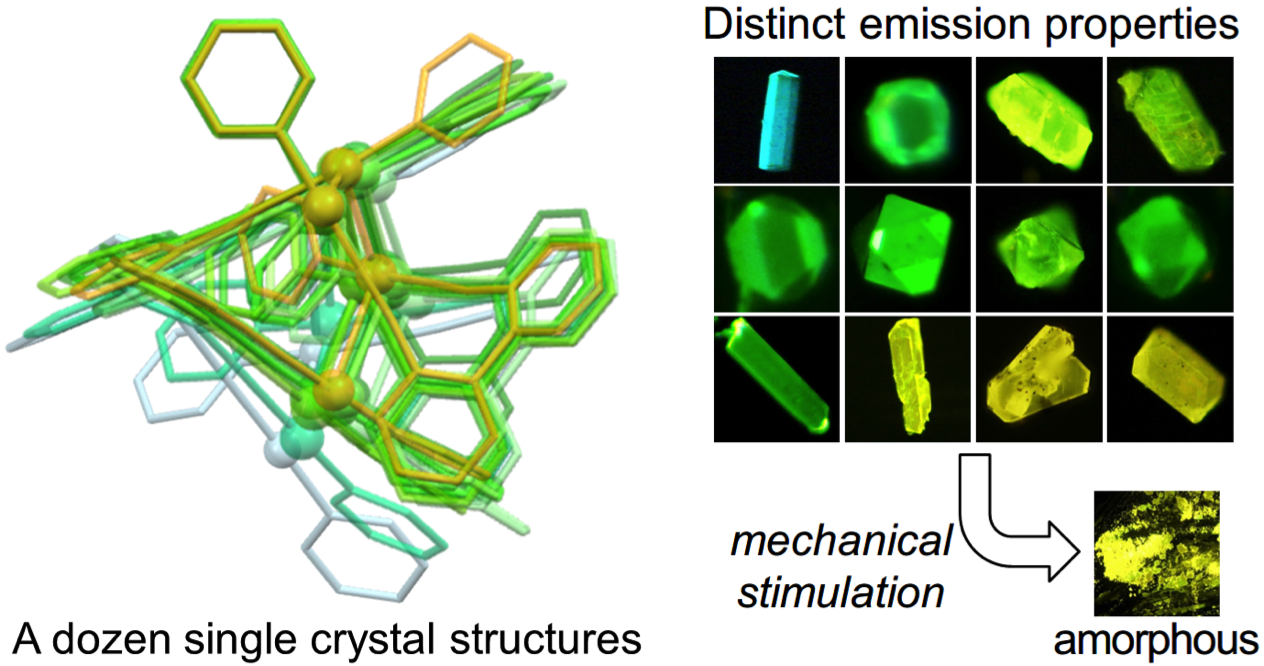Introduction of a Biphenyl Moiety for a Solvent Responsive Aryl Gold(I) Isocyanide Complex with Mechanical Reactivation

Luminescent compounds that are sensitive to volatile organic solvents are useful for detection of harmful gases. Although such compounds have been reported, discrimination of various types of volatile organic compounds using one compound remains challenging. We reported a series of gold isocyanide complexes that form various crystalline structures with distinct emission properties, which can be interconverted by mechanical stimulation and solvent addition. Here, we report that introduction of a biphenyl unit into a gold isocyanide scaffold (denoted complex 3) enables discrimination of various volatile organic compounds by forming 11 solvent-containing crystal structures 3/solvent [solvent can be CHCl3, pyridine (Py), CH2Cl2, CH2Br2, dimethylacetamide (DMA), acetaldehyde (AcH), CH3CN, DMF, (S)-propylene oxide (SPO), rac-propylene oxide (racPO), or acetone] with different emission properties (emission maxima of 490–580 nm). Mechanical stimulation of 3/solvent affords amorphous 3ground without solvent inclusion. The resulting 3ground can again detect volatile compounds by forming 3/solvent with concomitant emission color changes. We also afforded a dozen single crystals of 3, which include 11 solvated 3/solvent and one solvent-free 3/none. The molecular arrangements of 3 in 3/solvent and 3/none are all different. Comparison of various crystallographic parameters of 3/solvent and 3/none with their corresponding optical properties indicates that a combination of various structural properties of 3 affects the optical properties of 3. This study reveals that the introduction of a biphenyl moiety could be a useful design to develop versatile indicators for solvents through the formation of multiple luminescent crystal structure.

